Are you eager to learn How To Take Care Of Dahlias and ensure these vibrant blooms flourish in your garden? At CARS.EDU.VN, we provide expert advice and practical tips to help you cultivate healthy and beautiful dahlias, from planting to overwintering. Discover how to nurture these stunning flowers with our guide to dahlia care, proper watering techniques, and effective pest control strategies, ensuring your garden remains a colorful oasis.
1. Understanding Dahlias
1.1. Origin and Characteristics
Dahlias, originally from Central America, were brought to Europe by the Spanish, initially intended for culinary use alongside potatoes and tomatoes. Today, they are prized for their stunning variety of colors, shapes, and sizes, making them a favorite among gardeners worldwide. Understanding their basic needs is crucial for successful cultivation.
1.2. Importance of Proper Dahlia Care
Proper dahlia care ensures vibrant blooms and healthy plants. Neglecting their needs can lead to fewer flowers, disease, and pest infestations. Consistent care, including appropriate watering, feeding, and deadheading, promotes vigorous growth and abundant flowering.
2. Essential Growing Conditions for Dahlias
2.1. Sunlight Requirements
Dahlias thrive in sunny locations. They need at least six hours of direct sunlight daily to produce abundant blooms. Insufficient sunlight can result in leggy growth and fewer flowers. Choose a location in your garden that receives full sun for the best results.
2.2. Soil Preferences
Dahlias prefer fertile, moist, and well-drained soil. Good drainage is essential to prevent tuber rot. Enrich the soil with organic matter like compost or well-rotted manure to improve fertility and drainage. A slightly acidic to neutral pH (6.0-7.0) is ideal.
2.3. Climate Considerations
Dahlias are tender perennials, meaning they are sensitive to frost. In colder climates, tubers need to be lifted and stored indoors over winter. In milder climates, they may survive in the ground with proper mulching. Understanding your local climate is crucial for determining the best planting and overwintering strategies.
3. Planting Dahlias: A Step-by-Step Guide
3.1. When to Plant
The best time to plant dahlia tubers is in late spring, after the last frost. This typically falls around May in many regions. Starting tubers indoors a few weeks earlier can give them a head start, especially in colder climates.
3.2. Preparing the Planting Site
Before planting, prepare the soil by loosening it to a depth of 12-18 inches. Amend the soil with compost or well-rotted manure to improve fertility and drainage. Ensure the soil is free of weeds and large stones.
3.3. Planting Tubers Directly in the Ground
- Dig a hole that is about 4-6 inches deep.
- Place the tuber in the hole with the “eyes” (small buds) facing upward.
- Cover the tuber with soil, leaving the top of the tuber just below the surface.
- Water thoroughly after planting.
3.4. Starting Tubers Indoors
- In late March or early April, pot each tuber individually in a large plastic pot filled with multi-purpose potting compost.
- Position the tuber the right way up (look for the old stem, or a new shoot – this is the top) and position it so that it sits just below the soil surface.
- Water in well, allowing any excess water to drain away.
- Put the tubers in a light, frost-free place (such as a greenhouse, cold frame, porch, or windowsill) and keep the compost moist. New shoots should start to form about five weeks after planting.
3.5. Spacing Requirements
Space dahlia tubers at least 12-18 inches apart to allow for adequate air circulation and growth. Taller varieties may require more space. Proper spacing helps prevent overcrowding and reduces the risk of disease.
4. Watering Dahlias: Techniques and Tips
4.1. Importance of Consistent Moisture
Consistent moisture is essential for dahlia growth, especially during hot, dry periods. Dahlias need regular watering to support their large blooms and vigorous growth. However, overwatering can lead to tuber rot, so it’s crucial to find the right balance.
4.2. Watering Frequency and Depth
Water dahlias deeply once or twice a week, providing about 1-2 inches of water each time. Water at the base of the plant to avoid wetting the foliage, which can encourage fungal diseases. Check the soil moisture regularly and adjust watering as needed, depending on weather conditions.
4.3. Best Time to Water
The best time to water dahlias is in the morning. This allows the foliage to dry before nightfall, reducing the risk of fungal diseases. Morning watering also helps the plants absorb water more efficiently before the heat of the day.
4.4. Watering During Different Growth Stages
- Early Growth: Water sparingly until sprouts appear, then increase watering as the plants grow.
- Flowering: Water regularly to support abundant blooms.
- Dormancy: Reduce watering significantly after the first frost.
5. Fertilizing Dahlias for Optimal Growth
5.1. Types of Fertilizers
Use a balanced fertilizer with a ratio of 10-10-10 or 5-10-10. Avoid fertilizers high in nitrogen, as they can promote foliage growth at the expense of flowers. Bone meal and superphosphate can also be added to the soil at planting time to encourage strong root development.
5.2. Application Frequency
Fertilize dahlias every 4-6 weeks during the growing season. Start fertilizing when the plants are about 6 inches tall and continue until late summer. Avoid fertilizing after late summer, as this can interfere with tuber maturation.
5.3. Methods of Application
Apply fertilizer as a side dressing, spreading it around the base of the plant. Water thoroughly after application to help the fertilizer penetrate the soil and reach the roots. Foliar feeding with a diluted liquid fertilizer can also be beneficial.
5.4. Organic Fertilizing Options
Organic fertilizers like compost tea, fish emulsion, and seaweed extract are excellent options for feeding dahlias. These provide essential nutrients and improve soil health. Apply organic fertilizers every 2-4 weeks during the growing season.
6. Pruning and Deadheading Dahlias
6.1. Importance of Pruning
Pruning encourages bushier growth and more flowers. Pinching out the main growing tip when the plant is about 20cm tall promotes the growth of side shoots and increases flower production.
6.2. Techniques for Pruning
- Once the plant has reached about 20cm tall, encourage more flowering side shoots by pinching out the main growing tip.
- Remove the main shoot (in the centre of the plant, growing upright) down to the top pair of leaves, using a sharp knife or your thumb and forefinger.
6.3. Benefits of Deadheading
Deadheading is essential for prolonging the flowering period. Removing spent flowers prevents the plant from wasting energy on seed production and encourages it to produce more blooms.
6.4. How to Deadhead Correctly
- Regularly inspect your dahlias for spent flowers.
- Identify spent flower heads, which are more pointed than buds.
- Remove the entire flowering stem back to the nearest leaf node using sharp scissors or pruning shears.
7. Providing Support for Dahlias
7.1. Why Dahlias Need Support
Dahlias, especially taller varieties, can become top-heavy with their large blooms and are prone to flopping over. Providing support helps prevent stem breakage and keeps the flowers upright and attractive.
7.2. Types of Support Structures
- Stakes: Individual stakes made of wood, bamboo, or metal can be used to support each plant.
- Cages: Wire cages provide all-around support and are particularly useful for bushy varieties.
- Trellises: Trellises can be used for dahlias grown against a wall or fence.
7.3. How to Install Support
- Install stakes or cages at planting time to avoid disturbing the roots later.
- Drive the stake into the ground a few inches from the tuber.
- As the plant grows, tie the stem to the stake with soft twine or plant ties.
- For cages, simply place the cage over the plant at planting time.
8. Pest and Disease Management for Dahlias
8.1. Common Pests Affecting Dahlias
- Aphids: Small, sap-sucking insects that can cause distorted growth.
- Slugs and Snails: Feed on leaves and flowers, causing significant damage.
- Earwigs: Eat foliage, buds, and flowers.
- Spider Mites: Cause yellowing and stippling of leaves.
8.2. Identifying Pest Infestations
Regularly inspect your dahlias for signs of pest infestations, such as:
- Visible insects on leaves and stems
- Chewed or distorted foliage
- Sticky residue (honeydew) from aphids
- Webbing from spider mites
8.3. Organic Pest Control Methods
- Handpicking: Remove visible pests by hand.
- Insecticidal Soap: Spray plants with insecticidal soap to kill aphids, spider mites, and other soft-bodied insects.
- Diatomaceous Earth: Sprinkle diatomaceous earth around plants to deter slugs and snails.
- Earwig Traps: Create earwig traps by pushing a garden cane into the soil and placing an upturned garden pot stuffed with straw on top of it. During the day, the earwigs will retreat to the pot, and you can then dispose of them.
8.4. Common Diseases Affecting Dahlias
- Powdery Mildew: White, powdery coating on leaves.
- Botrytis (Gray Mold): Grayish-brown mold on flowers and foliage.
- Tuber Rot: Soft, mushy tubers caused by overwatering and poor drainage.
- Mosaic Virus: Causes mottled and distorted leaves.
8.5. Preventing and Treating Diseases
- Good Air Circulation: Space plants adequately to promote good air circulation.
- Avoid Wetting Foliage: Water at the base of the plant to prevent fungal diseases.
- Fungicides: Use fungicides to treat powdery mildew and botrytis.
- Proper Drainage: Ensure well-drained soil to prevent tuber rot.
- Remove Infected Plants: Remove and destroy plants infected with mosaic virus.
9. Overwintering Dahlias: Protecting Tubers
9.1. When to Lift Tubers
In colder regions, lift dahlia tubers after the first frost has blackened the foliage. This typically occurs in late autumn or early winter.
9.2. Preparing Tubers for Storage
- Cut the stems back to about 12cm.
- Gently lift the tuber with a garden fork and remove the soil with your fingers.
- Place tubers upside down in a newspaper-lined tray so that they can dry out for a couple of weeks in a dry place.
9.3. Storing Tubers
- Once dry, place the tubers in a cool, frost-free place in a shallow tray of dry compost or horticultural sand.
- Don’t water them. They don’t need light during this time, making a dark garage the perfect store.
- Leave them here until it’s time to pot them up again, in late March or early spring.
9.4. Overwintering in Mild Climates
In mild climates with well-drained soil, you can leave dahlia tubers in the ground over winter. Cover the soil with a thick layer of mushroom compost or straw to protect the tubers from frost. In spring, simply rake away the excess compost.
10. Propagating Dahlias: Creating New Plants
10.1. Dividing Tubers
Dahlia tubers can be divided in spring to create new plants.
- Press the tubers down onto a tray of shallow compost and leave them to start growth in a greenhouse or in a sunny room.
- Keep the compost warm and moist.
- Once the tubers start to produce shoots, divide them using a clean, sharp knife so that each section has at least one shoot and set of roots.
- Pot on the divisions and grow on to plant out once all danger of frost has passed.
10.2. Taking Cuttings
Dahlias can also be propagated by taking basal cuttings in spring.
- Each tuber will give you around five new plants for free that will flower in summer.
- You can also buy rooted cuttings online in spring.
- These will produce small plants in their first year, so will be more suitable for pots, but they will flower well.
10.3. Growing Dahlias from Seed
It’s also possible to grow dahlias from seed. Sow seeds indoors in early spring and transplant seedlings outdoors after the last frost.
11. Choosing the Right Dahlia Variety
11.1. Understanding Dahlia Classifications
Dahlias are classified based on their flower shape and size. Some common types include:
- Single Dahlias: Have a single ring of petals around a central disc.
- Cactus Dahlias: Have fully double blooms with narrow, pointed petals.
- Semi-Cactus Dahlias: Similar to cactus dahlias but with broader petal bases.
- Pompon Dahlias: Perfect spheres formed of tightly curved petals.
- Ball Dahlias: Larger than pompon dahlias with a spiral arrangement of petals.
- Waterlily Dahlias: Broad, shallow double flowers that resemble waterlilies.
- Anemone Dahlias: Tubular florets in the center surrounded by flatter petals.
- Decorative Dahlias: Fully double flowers with broad, slightly flat petals.
- Collarette Dahlias: Large petals surrounding a collar of smaller petals around a central disc.
11.2. Selecting Varieties Based on Garden Space
- Small Gardens: Choose dwarf or compact varieties that won’t overcrowd the space.
- Large Gardens: Opt for taller varieties that can create a dramatic backdrop.
- Container Gardening: Select varieties that thrive in pots and containers.
11.3. Popular Dahlia Varieties
| Variety Name | Flower Type | Color | Height (inches) | Best Use |
|---|---|---|---|---|
| ‘Arabian Night’ | Single | Dark Red | 36-48 | Borders, Cut Flowers |
| ‘Joe Swift’ | Single | Red | 36-48 | Borders, Cut Flowers |
| ‘Bishop of Llandaff’ | Single | Red | 36-48 | Borders, Cut Flowers |
| ‘Doris Day’ | Cactus | Orange | 36-48 | Borders, Cut Flowers |
| ‘Ryecroft Pixie’ | Cactus | Pink | 36-48 | Borders, Cut Flowers |
| ‘Dame Deirdre’ | Semi-Cactus | Pink | 36-48 | Borders, Cut Flowers |
| ‘Pink Preference’ | Semi-Cactus | Pink | 36-48 | Borders, Cut Flowers |
| ‘Vulcan’ | Semi-Cactus | Red | 36-48 | Borders, Cut Flowers |
| ‘Moor Place’ | Pompon | Purple | 36-48 | Borders, Cut Flowers |
| ‘Franz Kafka’ | Pompon | Purple | 36-48 | Borders, Cut Flowers |
| ‘Jomanda’ | Ball | Orange | 36-48 | Borders, Cut Flowers |
| ‘Aurora’s Kiss’ | Ball | Orange | 36-48 | Borders, Cut Flowers |
| ‘Kilburn Rose’ | Waterlily | Pink | 36-48 | Borders, Cut Flowers |
| ‘Taratahi Ruby’ | Waterlily | Pink | 36-48 | Borders, Cut Flowers |
| ‘Lambada’ | Anemone | Red | 36-48 | Borders, Cut Flowers |
| ‘Checkers’ | Decorative | Red | 36-48 | Borders, Cut Flowers |
| ‘David Howard’ | Decorative | Orange | 36-48 | Borders, Cut Flowers |
| ‘Chimborazo’ | Collarette | Yellow | 36-48 | Borders, Cut Flowers |
| ‘Yankee Doodle Dandy’ | Collarette | Yellow | 36-48 | Borders, Cut Flowers |
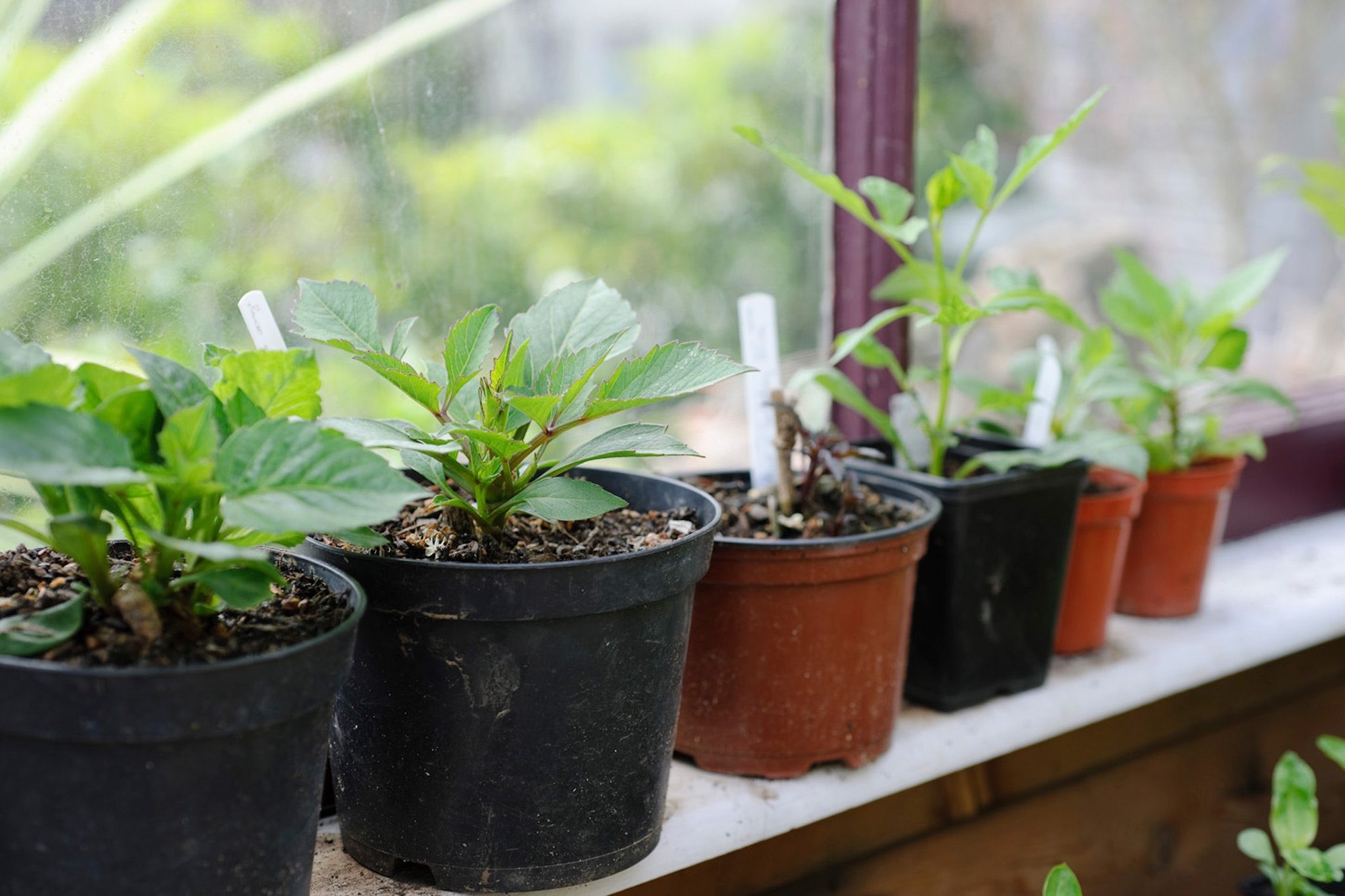
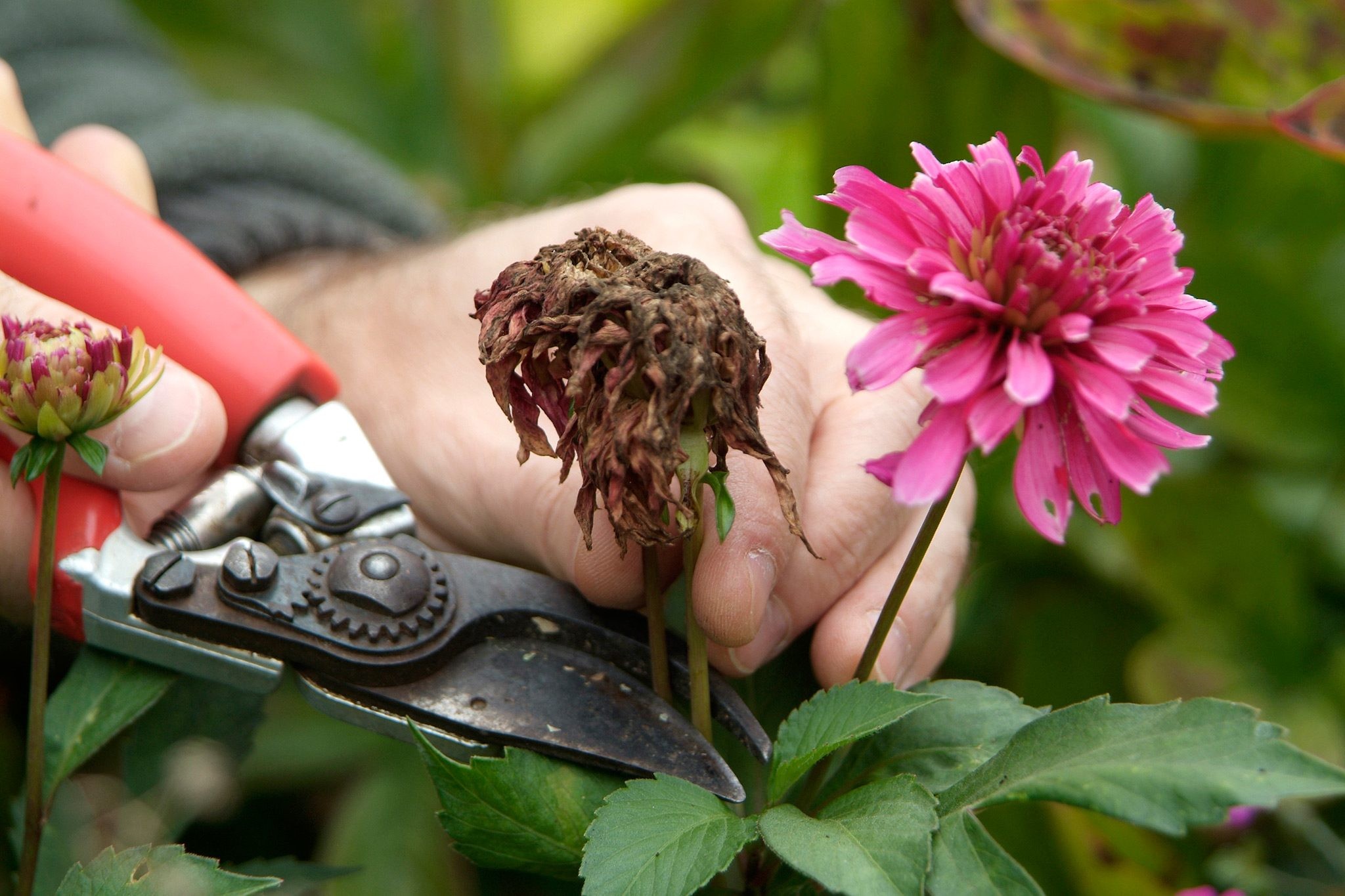
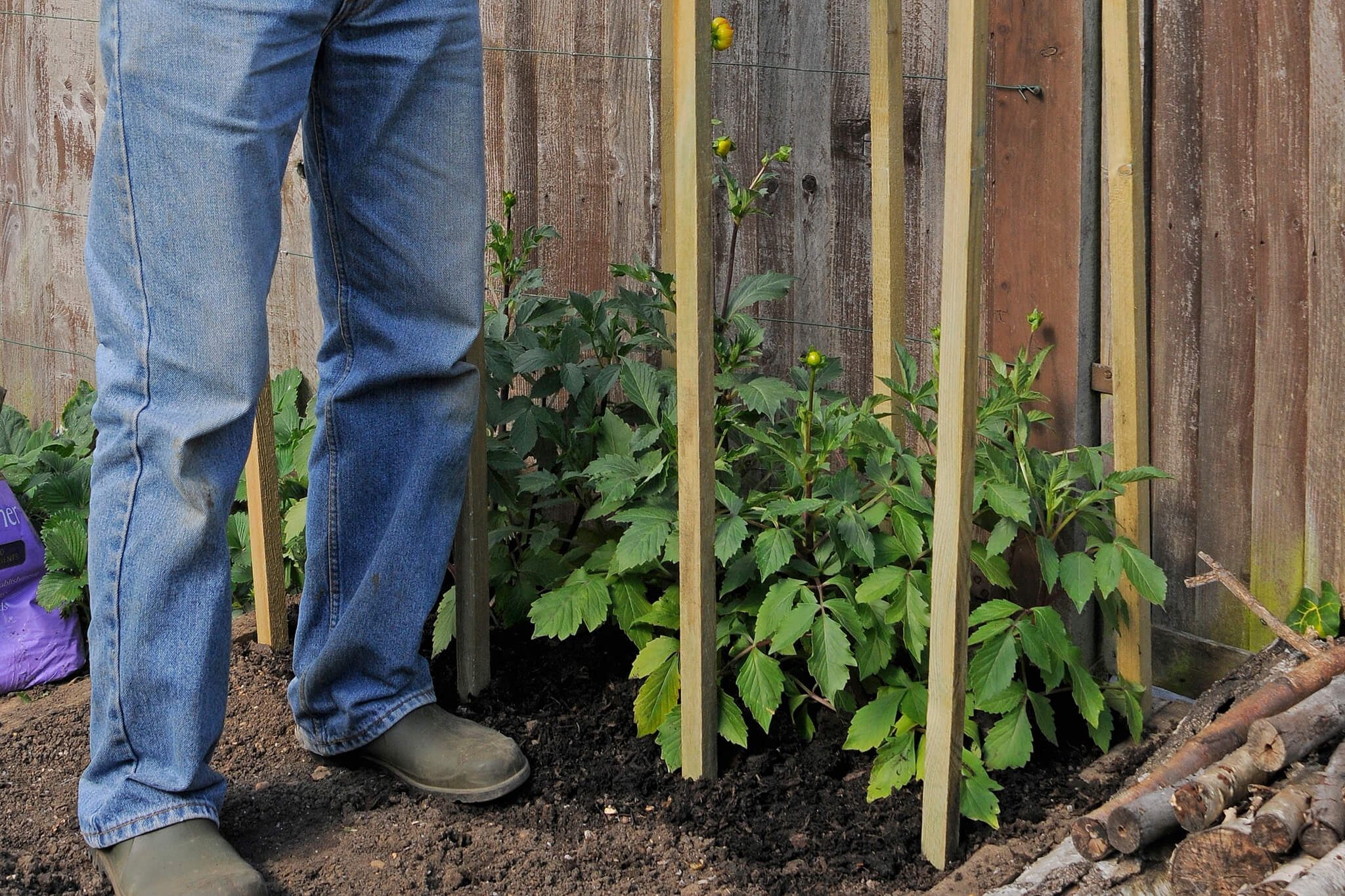

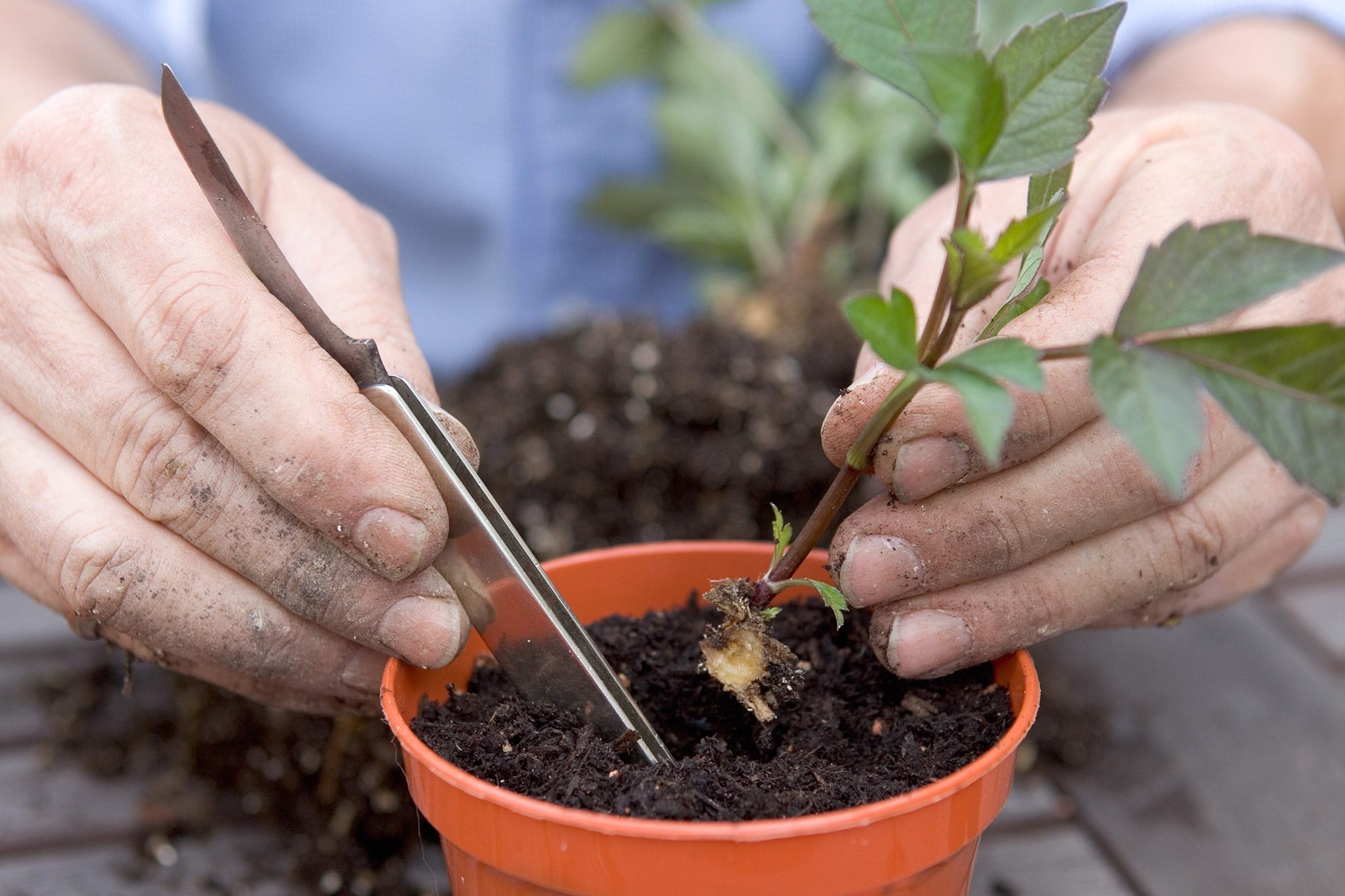
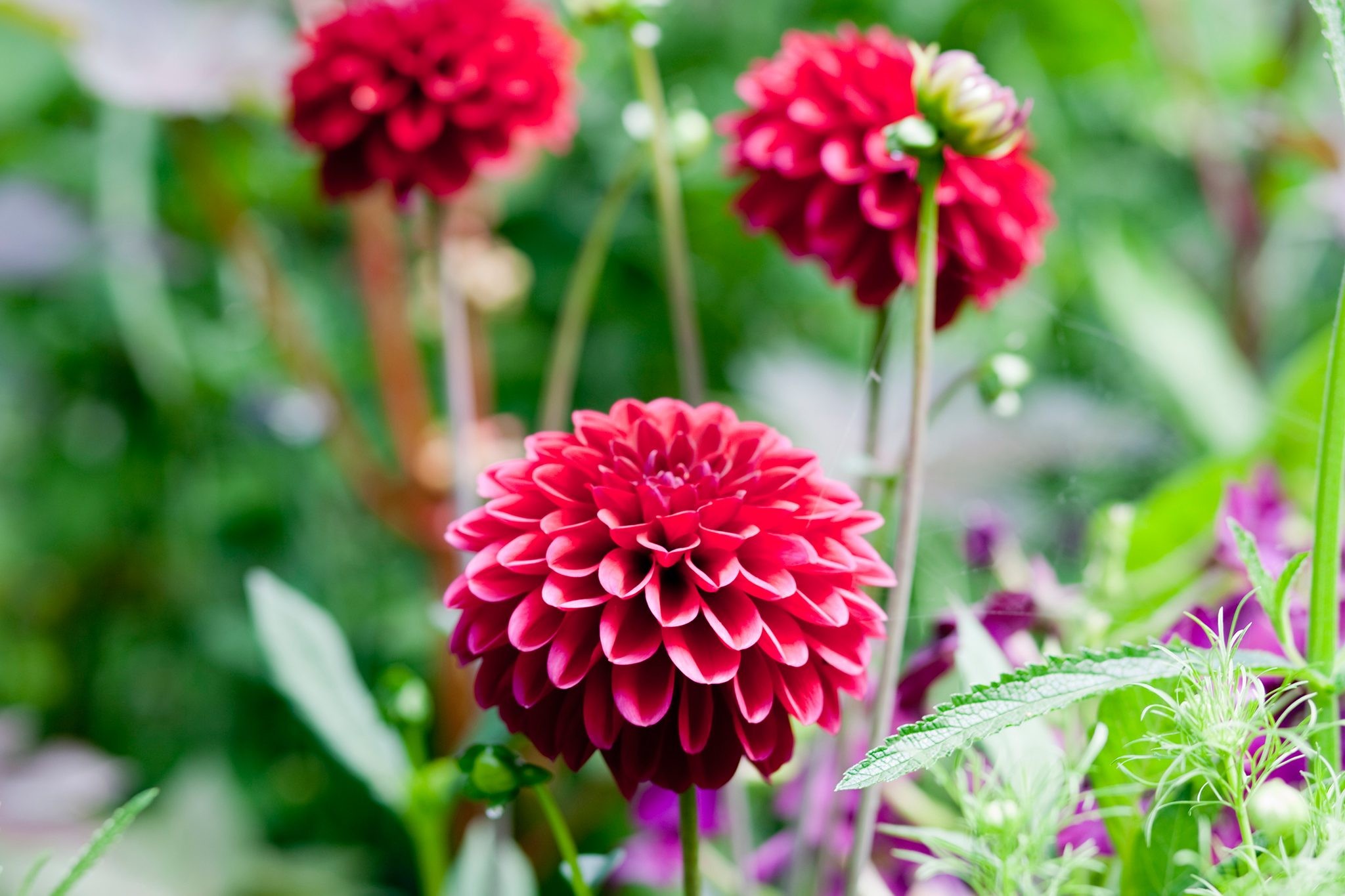
12. Dahlias by Flower Color
| Colour | Varieties |
|---|---|
| Red | Arabian Night, Joe Swift, Bishop of Llandaff, Vulcan, Lambada, Checkers, Alfred Grille |
| Pink | Doris Day, Ryecroft Pixie, Dame Deirdre, Pink Preference, Kilburn Rose, Taratahi Ruby, Emory Paul, Great Silence |
| Purple | Moor Place, Franz Kafka, Purple Haze, Karma Yin Yang, Fascination |
| Orange | Jomanda, Aurora’s Kiss, David Howard, Glorie Van Heemstede, Wittem |
| Yellow | Chimborazo, Yankee Doodle Dandy, Kelvin Floodlight, Sandra, Golden Emblem |
| White | Alpen Sarah, Blizzard, Café au Lait, Ice Crystal, White Perfection |
| Multicoloured | Karma Corona, Break Out, Contraste, Happy Butterfly, Hapet Daydream |
13. Frequently Asked Questions
13.1. Help! My dahlia stem snapped off in the wind!
Don’t worry, while this is frustrating, if the tubers are healthy then more stems will grow from the base. Give the plant a good drink and snip the severed stem down to a pair of leaf nodes, and be patient.
13.2. What size pot is best for growing dahlias?
Dahlias vary in size, but generally, a pot with a height and diameter of around 35cm is sufficient for a dahlia up to 1m in height. Plant one dahlia tuber per pot and keep it well-watered. Bear in mind that you will need to stake your plant, and it’s best to avoid growing very tall dahlias in pots.
13.3. Help! My dahlia doesn’t have any tubers
Dahlias grown from seed typically develop a tuber by the end of the growing season. However, if there is no tuber, simply dig up the rootball and pot the dahlia up, watering it to settle it in. Then keep it in an unheated greenhouse or similar, where it can continue growing without the threat of frost. Water sparingly so the compost doesn’t dry out, and then replant after frost has passed in spring. It should develop tubers the following year.
13.4. Help! My dahlia leaves are curled and distorted!
Dahlia leaves can curl and become distorted for a number of reasons, including attacks from aphids and red spider mites, mosaic virus, and even botrytis. Inspect the plant thoroughly for signs of invertebrates and remove them, along with the leaves, and the plant should recover. If there are no signs of invertebrates, then mosaic virus or botrytis may be the cause. There’s no cure for this, so, sadly, you will have to destroy the plant.
13.5. How often should I water my dahlias?
Water dahlias deeply once or twice a week, providing about 1-2 inches of water each time. Adjust watering as needed based on weather conditions.
13.6. What kind of fertilizer should I use?
Use a balanced fertilizer with a ratio of 10-10-10 or 5-10-10. Avoid fertilizers high in nitrogen.
13.7. When should I start fertilizing my dahlias?
Start fertilizing when the plants are about 6 inches tall and continue until late summer.
13.8. How do I prevent pests from attacking my dahlias?
Use organic pest control methods like handpicking, insecticidal soap, and diatomaceous earth.
13.9. How do I prevent diseases in my dahlias?
Ensure good air circulation, avoid wetting foliage, and use fungicides if necessary.
13.10. Can I grow dahlias in pots?
Yes, choose dwarf or compact varieties and use a large container with well-drained soil.
14. Maximizing Dahlia Blooms: Expert Tips
14.1. Choosing the Right Location
Select a sunny spot with at least six hours of direct sunlight per day. Ensure the soil is fertile, well-drained, and enriched with organic matter.
14.2. Preparing the Soil
Loosen the soil to a depth of 12-18 inches and amend it with compost or well-rotted manure. Add bone meal or superphosphate to encourage strong root development.
14.3. Watering Techniques
Water deeply and consistently, especially during hot, dry periods. Avoid overwatering, which can lead to tuber rot.
14.4. Fertilizing Strategies
Use a balanced fertilizer every 4-6 weeks during the growing season. Avoid high-nitrogen fertilizers.
14.5. Pruning and Deadheading
Pinch out the main growing tip to encourage bushier growth and deadhead spent flowers regularly to prolong the flowering period.
14.6. Pest and Disease Control
Monitor plants regularly for signs of pests and diseases and take action promptly. Use organic pest control methods and fungicides as needed.
14.7. Providing Support
Provide support for taller varieties to prevent stem breakage and keep flowers upright.
15. Additional Resources on CARS.EDU.VN
At CARS.EDU.VN, we understand the challenges and needs of gardeners, from finding reliable information to troubleshooting common issues. We offer a comprehensive range of articles and guides to help you succeed. Visit our website for more detailed information on dahlia care, as well as other gardening topics. Our resources include:
- Detailed guides on planting and growing various plants
- Tips for creating beautiful and sustainable gardens
- Expert advice on pest and disease management
- Reviews of gardening tools and equipment
- A community forum where you can connect with other gardeners and share your experiences
16. Connect with Us
We’re here to help you with all your gardening needs. If you have any questions or need further assistance, don’t hesitate to contact us.
- Address: 456 Auto Drive, Anytown, CA 90210, United States
- WhatsApp: +1 555-123-4567
- Website: CARS.EDU.VN
Let cars.edu.vn be your trusted partner in creating a vibrant and thriving garden. Together, we can cultivate beauty and abundance in every season.